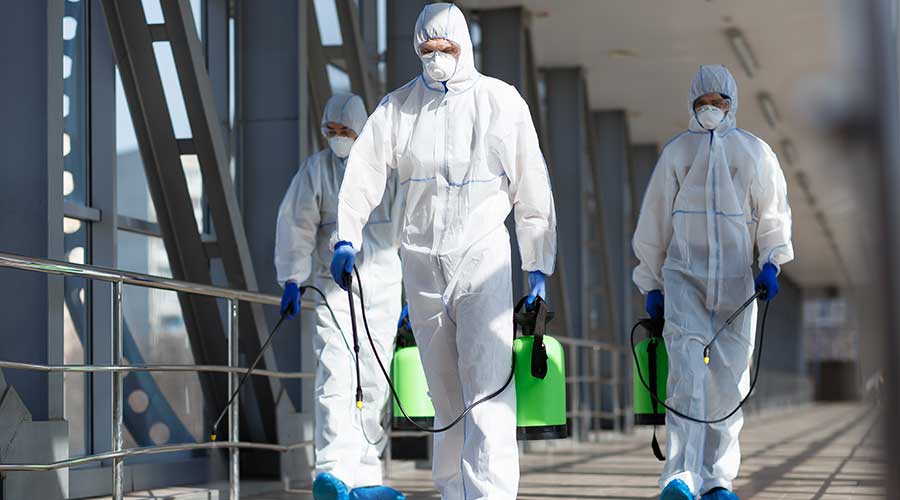Different situations may call for different solutions, and that goes for disinfection, too. In this manufacturer roundtable, Healthcare Facilities Today talks to disinfectant manufacturers about the different times to use cleaning chemicals or a harsher germ-killing disinfectant.
In what situations is it best to use a cleaning chemical, versus a harsher germ-killing disinfectant?
“Cleaning with a general-purpose cleaner and a mop or cloth will remove pathogens along with the soils. Disinfectants should be used only where necessary and primarily on high touch surfaces. The EPA also requires that visibly soiled areas be pre-cleaned before applying disinfectant.”
— Natasha Stiles, national sales manager, PortionPac Chemical Corporation
“Long-term care and hospitalized patients are extremely vulnerable to serious infections. Contaminated environmental surfaces can serve as a source of pathogen transmission between patients. Therefore, in healthcare settings, particularly in patient care areas, regulations require the use of an EPA-registered disinfectant. A best practice is to use a product that can both clean and disinfectant in one step.
Clorox EcoClean is a great choice for those seeking eco-conscious cleaners and disinfectants to help keep facilities clean and healthy without sacrificing on efficacy by using EPA Safer Choice and Design for the Environment certified ingredients.”
— Doe Kley, infection prevention fellow, Clorox Healthcare’s Clinical and Scientific Affairs Team
“As interesting as this question is, it is a misconception. Whether employed for cleaning or disinfecting, chemicals can exhibit harsh properties, carrying their own set of unique dangers. Conversely, there are chemicals deemed safe and gentle for use while remaining remarkably effective. SteraMist, for example, stands out as a disinfectant that strikes a balance between safety and efficacy.
It is crucial to highlight that some disinfectants are less harmful than certain cleaning chemicals. Also, there should be a heightened emphasis on thoroughly reading and understanding Safety Data Sheets (SDSs) before utilizing any chemical product. This ensures that individuals are well-informed about potential hazards, recommended protective measures, and proper handling procedures, contributing to a safer working environment.”
— Spokesperson from TOMI Environmental Solutions Inc.
Jeff Wardon, Jr. is the assistant editor for the facilities market.

 Rethinking Strategies for Construction Success
Rethinking Strategies for Construction Success From Touchless to Total Performance: Healthcare Restroom Design Redefined
From Touchless to Total Performance: Healthcare Restroom Design Redefined New York State Approves $53M Construction Program at Niagara Falls Memorial Medical Center
New York State Approves $53M Construction Program at Niagara Falls Memorial Medical Center How Health Systems Are Rethinking Facilities Amid Margin Pressure
How Health Systems Are Rethinking Facilities Amid Margin Pressure Ground Broken on New Medical Office Building in Scottsdale, AZ
Ground Broken on New Medical Office Building in Scottsdale, AZ